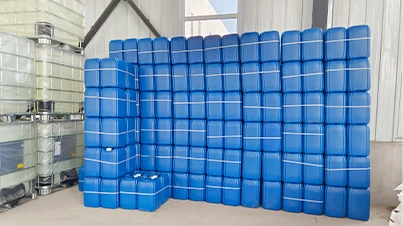coagulant and flocculant chemicals
Coagulant and Flocculant Chemicals Essential Agents in Water Treatment
Water treatment is a crucial process in ensuring that our water supply is safe for consumption and environmental sustainability. Among the various methods employed in this field, the use of coagulant and flocculant chemicals plays a pivotal role in effectively removing suspended particles, colloids, and impurities from water sources. Understanding the function and application of these chemicals is vital for optimizing water treatment processes.
What Are Coagulants and Flocculants?
Coagulants are chemicals that promote the agglomeration of small particles into larger clusters, known as flocs. The process of coagulation involves neutralizing the charges on these suspended particles, which often carry a negative charge due to the presence of organic matter, silt, and dirt in water. When coagulants are added, they facilitate the formation of larger particle aggregates, making it easier for them to settle out of the water.
Flocculants, on the other hand, are polymers that further aid in the aggregation process by binding together the flocs formed during coagulation. These agents increase the size of the particles, creating a more structured floc that can be efficiently removed during the sedimentation phase of water treatment. The combination of coagulants and flocculants enhances the clarity and purity of water.
Types of Coagulants and Flocculants
There are several types of coagulant chemicals used in water treatment, including
1. Aluminium Sulfate (Alum) One of the most common coagulants, alum is highly effective in removing turbidity and is cost-efficient.
2. Ferric Sulfate This coagulant is often preferred for its ability to flocculate at lower dosages compared to alum, making it suitable for various water qualities.
3. Polymeric Coagulants These are synthetic agents that provide enhanced performance and less sludge generation than traditional coagulants.
Flocculants can be categorized into organic and inorganic types, with organic flocculants often made from natural substances (like starches) or synthetic polymers
. They are designed to improve the settling rates of particulates, ensuring cleaner water output.coagulant and flocculant chemicals

Applications in Water Treatment
Coagulants and flocculants are widely used in various stages of water treatment, including
- Drinking Water Treatment They are essential in municipal water treatment facilities, where removing contaminants from source water ensures compliance with health standards.
- Wastewater Treatment In treating industrial or municipal wastewater, coagulants and flocculants help in the removal of pollutants, making effluent suitable for discharge or reuse.
- Mining and Mineral Processing These chemicals play a key role in clarifying process water and recovering valuable minerals from slag.
Benefits and Challenges
The benefits of using coagulant and flocculant chemicals in water treatment are significant. They improve water quality, reduce the amount of soluble solids, and enhance the efficiency of sedimentation processes. Consequently, they can lead to lower operational costs and decreased chemical usage in downstream processes.
However, challenges remain in the application of these chemicals. Proper dosage and mixing techniques must be adhered to, as over or underdosing can negatively impact the treatment process. Additionally, the disposal of sludge generated from coagulation and flocculation can pose environmental concerns, necessitating effective waste management strategies.
Conclusion
Coagulant and flocculant chemicals are indispensable in modern water treatment practices. Their ability to transform turbid water into clean, potable, and safe water illustrates their importance in public health and environmental protection. As technologies advance, the focus will remain on optimizing the use of these chemicals while minimizing their ecological footprint, ensuring sustainable water treatment solutions for future generations.
-
Water Treatment with Flocculant Water TreatmentNewsJun.12,2025
-
Polymaleic AnhydrideNewsJun.12,2025
-
Polyaspartic AcidNewsJun.12,2025
-
Enhance Industrial Processes with IsothiazolinonesNewsJun.12,2025
-
Enhance Industrial Processes with PBTCA SolutionsNewsJun.12,2025
-
Dodecyldimethylbenzylammonium Chloride SolutionsNewsJun.12,2025





